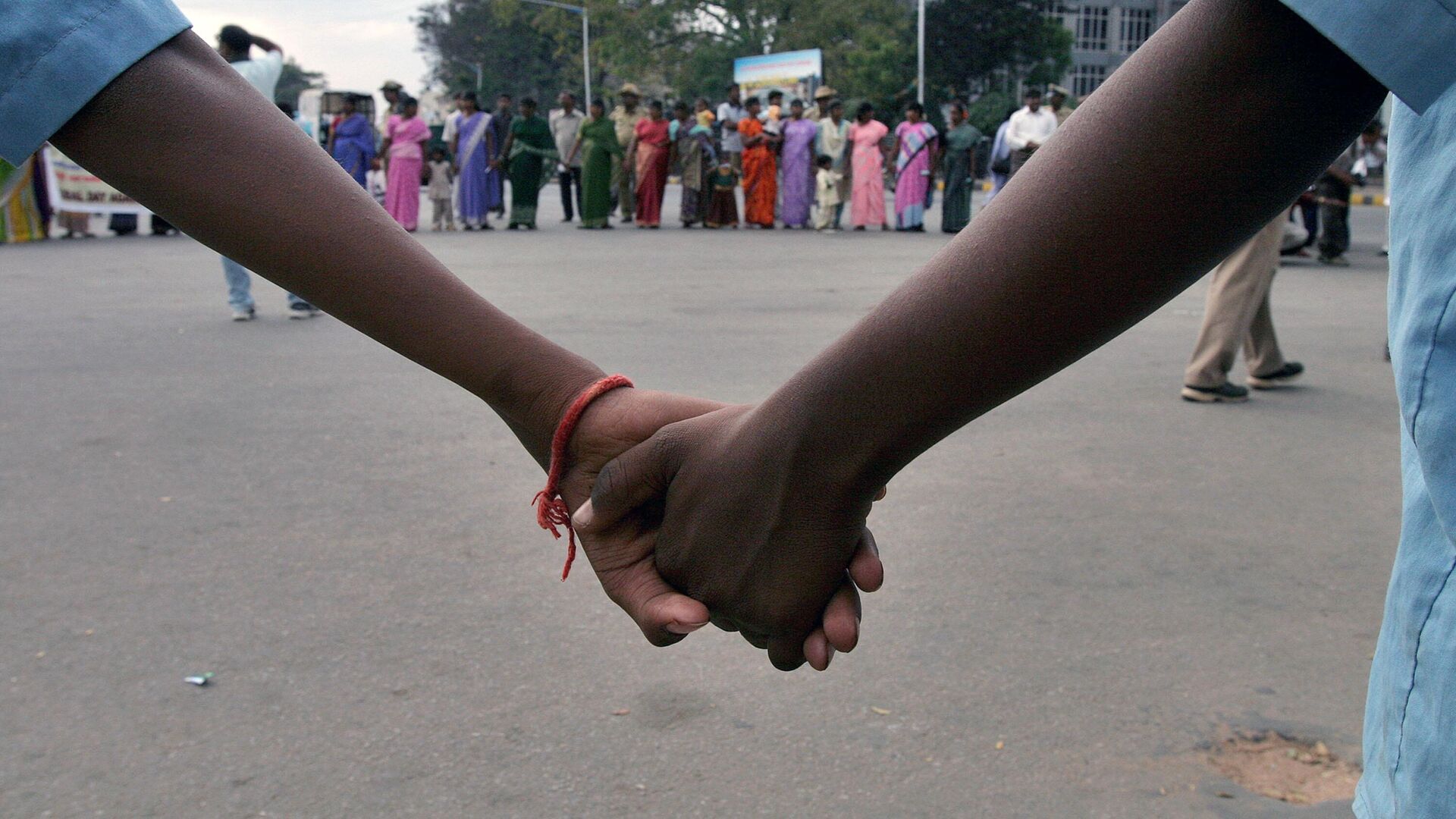https://sputniknews.in/20230111/human-trafficking-awareness-day-ten-ways-to-curb-the-crime-465312.html
Human Trafficking Awareness Day: Ten Ways to Curb the Crime
Human Trafficking Awareness Day: Ten Ways to Curb the Crime
Sputnik India
Around 225,000 people worldwide become victims of human trafficking every year. The majority of them are trafficked from Asia to Europe, a report by the UN... 11.01.2023, Sputnik India
2023-01-11T18:07+0530
2023-01-11T18:07+0530
2023-01-11T18:07+0530
india
crime
human traficking
sex slavery
south asia
child labor
forced labor
child marriage
sputnik exclusives
https://cdn1.img.sputniknews.in/img/07e7/01/0b/467359_0:290:3001:1978_1920x0_80_0_0_233513a4b08a8e8cd397722d60ef1496.jpg
Shocking stories of women and children sold off and trafficked for forced labor, sex slavery and prostitution have been on the rise over the past years.India recorded a 28% rise in human trafficking in 2021 compared to 2020, when it registered 1,714 cases.Out of these victims, 2,877 were children and 3,656 adults, while around 6,213 were rescued from the clutches of traffickers. As India marks National Human Trafficking Awareness Day on January 11, Sputnik spoke to Pallabi Ghosh, an anti-trafficking activist and founder of the Impact and Dialogue Foundation, who suggested ten measures that may help reduce human trafficking. Top Ten to Combat Human Trafficking1. Spread awareness about all kinds of trafficking (organs, limbs, labor, sex, bridal, child) to different educational institutions, law enforcement agencies and the wider population. 2. Create anti-trafficking clubs in schools and colleges, as children are more vulnerable to trafficking. 3. Organize talks, groups, consortiums and conversations on human trafficking. 4. Create Village Vigilante Committees (VVCs) to keep a track of individuals who go out of the villages to work. 5 Build a centralized network between NGOs, civil society and law enforcement, at the source, transit, and destination that would help in tracking traffickers. 6. Whenever you purchase anything, be it clothes, cosmetics, jewelry or food, check the background and find out if child labor has been used. 7. Talk to people who are in charge of bus stations, airports, railway stations, and ferry terminals, as those are the transit points through which people are trafficked. 8. Train on-the-ground staff like porters and security staff about anti-trafficking checks and measures, as they are the first responders when it comes to human trafficking.9. Volunteer with NGOs who work to prevent trafficking. 10. Report if you see any incident which looks suspicious.
india
south asia
Sputnik India
feedback.hindi@sputniknews.com
+74956456601
MIA „Rossiya Segodnya“
2023
Sangeeta Yadav
https://cdn1.img.sputniknews.in/img/07e6/0c/0f/110602_0:0:641:640_100x100_80_0_0_c298016a79eb02ef8caa9d1f688c12a5.jpg
Sangeeta Yadav
https://cdn1.img.sputniknews.in/img/07e6/0c/0f/110602_0:0:641:640_100x100_80_0_0_c298016a79eb02ef8caa9d1f688c12a5.jpg
News
en_IN
Sputnik India
feedback.hindi@sputniknews.com
+74956456601
MIA „Rossiya Segodnya“
Sputnik India
feedback.hindi@sputniknews.com
+74956456601
MIA „Rossiya Segodnya“
Sangeeta Yadav
https://cdn1.img.sputniknews.in/img/07e6/0c/0f/110602_0:0:641:640_100x100_80_0_0_c298016a79eb02ef8caa9d1f688c12a5.jpg
national human trafficking awareness day, sex slavery in india, forced labor in south asia, south asia sex trafficking, child labor, sex slavery in asia
national human trafficking awareness day, sex slavery in india, forced labor in south asia, south asia sex trafficking, child labor, sex slavery in asia
Human Trafficking Awareness Day: Ten Ways to Curb the Crime
Around 225,000 people worldwide become victims of human trafficking every year. The majority of them are trafficked from Asia to Europe, a report by the UN Office on Drugs and Crime suggests.
Shocking stories of women and children sold off and trafficked for forced labor, sex slavery and prostitution have been on the rise over the past years.
India recorded a 28% rise in human trafficking in 2021 compared to 2020, when it registered 1,714 cases.
According to India's latest National Crime Records Bureau report, 2,189 cases of human trafficking were reported across the country in 2021, involving 6,533 victims.
Out of these victims, 2,877 were children and 3,656 adults, while around 6,213 were rescued from the clutches of traffickers.
As India marks National Human Trafficking Awareness Day on January 11, Sputnik spoke to Pallabi Ghosh, an anti-trafficking activist and founder of the Impact and Dialogue Foundation, who suggested ten measures that may help reduce human trafficking.
Top Ten to Combat Human Trafficking
1. Spread awareness about all kinds of trafficking (organs, limbs, labor, sex, bridal, child) to different educational institutions, law enforcement agencies and the wider population.
2. Create anti-trafficking clubs in schools and colleges, as children are more vulnerable to trafficking.
3. Organize talks, groups, consortiums and conversations on human trafficking.
4. Create Village Vigilante Committees (VVCs) to keep a track of individuals who go out of the villages to work.
5 Build a centralized network between NGOs, civil society and law enforcement, at the source, transit, and destination that would help in tracking traffickers.
6. Whenever you purchase anything, be it clothes, cosmetics, jewelry or food, check the background and find out if child labor has been used.
7. Talk to people who are in charge of bus stations, airports, railway stations, and ferry terminals, as those are the transit points through which people are trafficked.
8. Train on-the-ground staff like porters and security staff about anti-trafficking checks and measures, as they are the first responders when it comes to human trafficking.
9. Volunteer with NGOs who work to prevent trafficking.
10. Report if you see any incident which looks suspicious.


